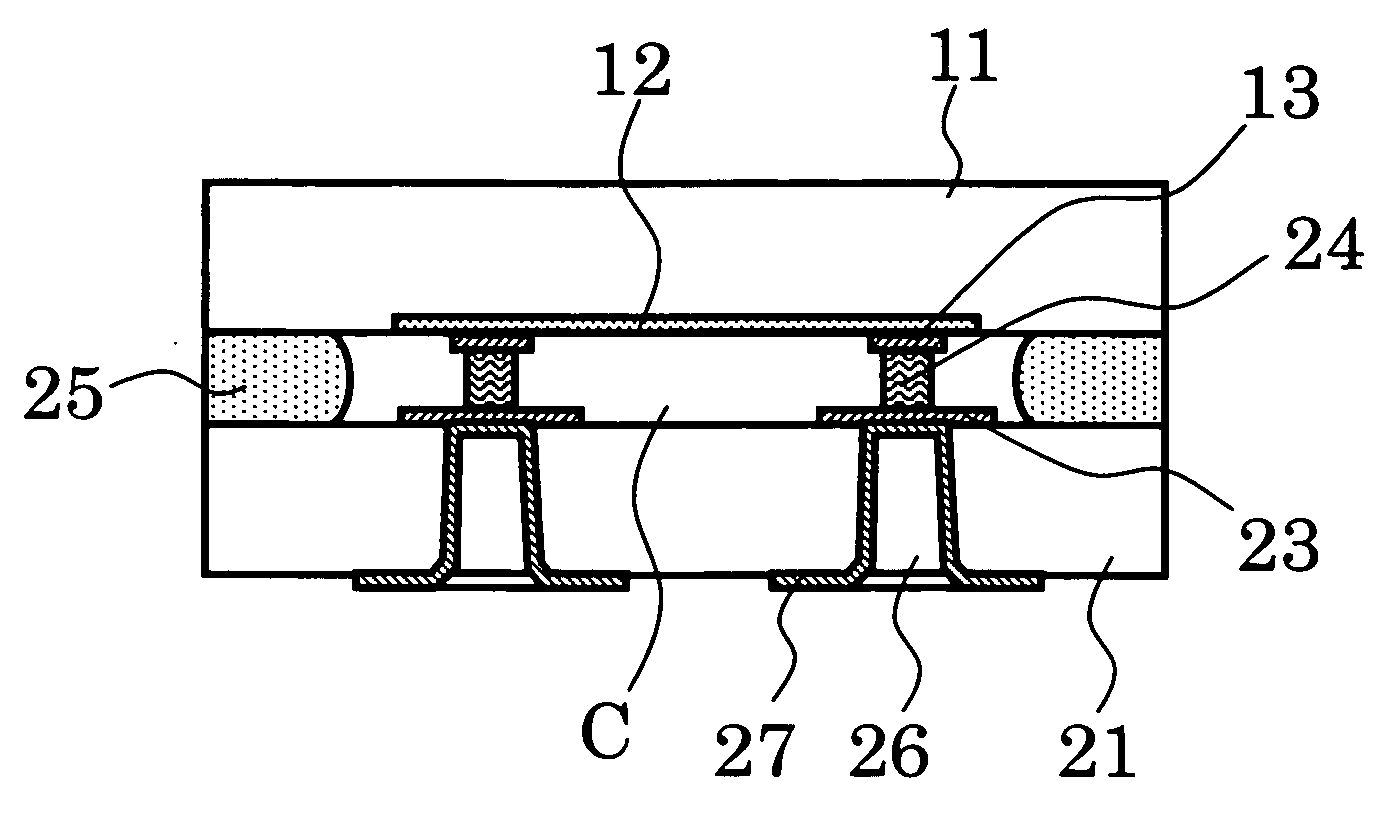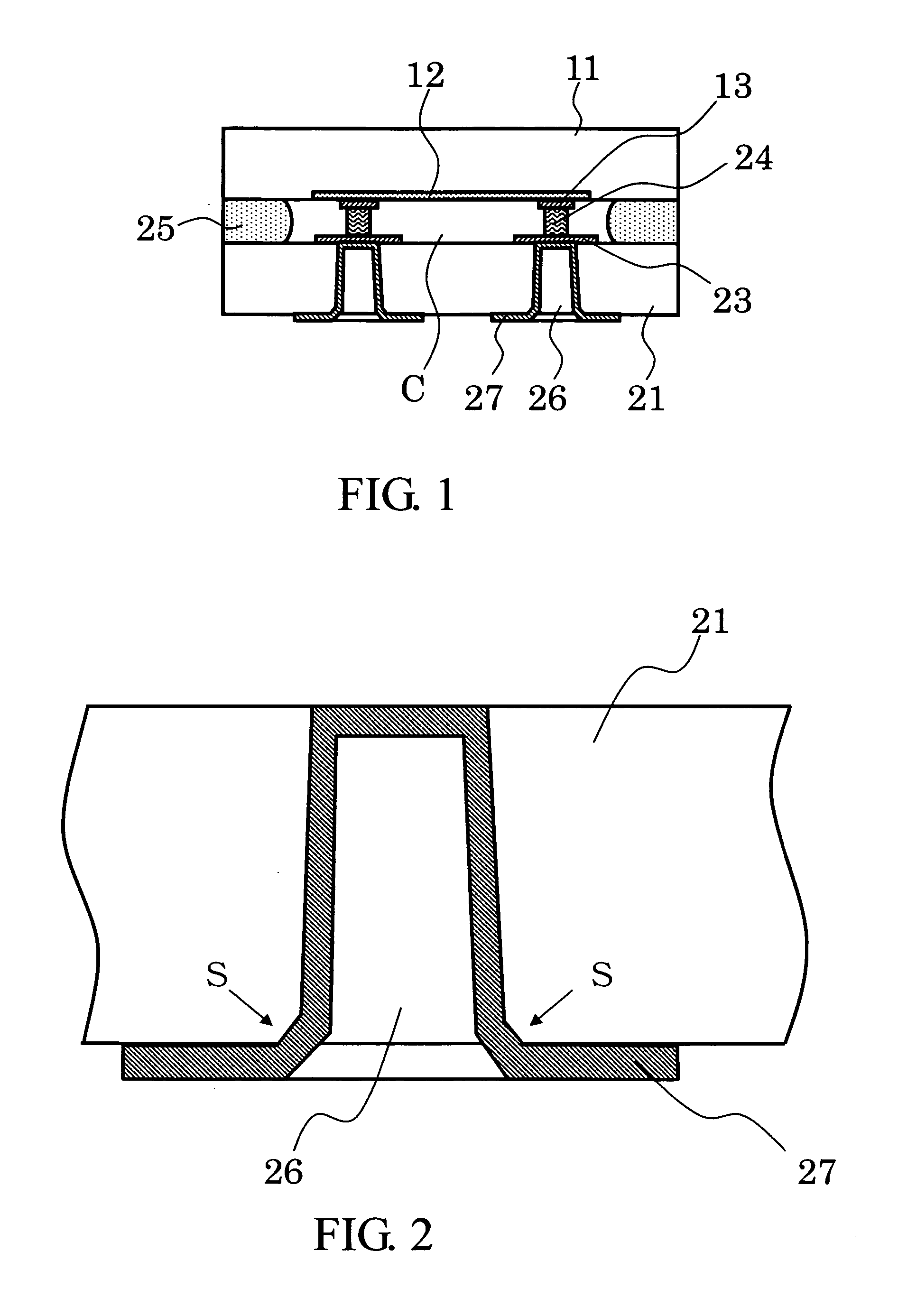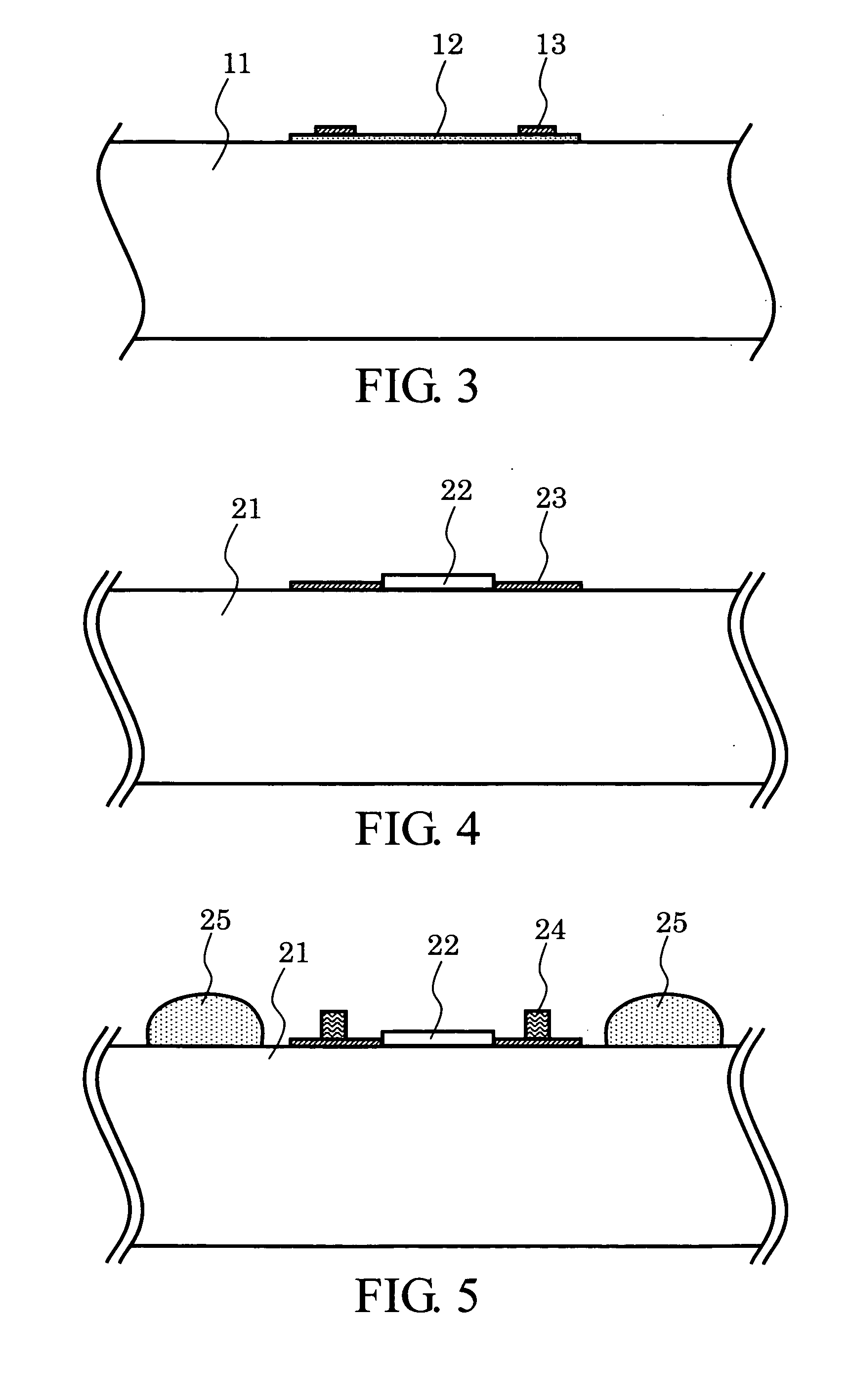Wafer-level package and its manufacturing method
a manufacturing method and package technology, applied in the field of wafer-level packages, can solve the problems of complex process for forming the via hole, the trade-off between the formation of the via hole and the embedding of the via metal becomes the problem, and the band characteristics of parametric inductance degrades
- Summary
- Abstract
- Description
- Claims
- Application Information
AI Technical Summary
Problems solved by technology
Method used
Image
Examples
first embodiment
[0082]FIG. 3 through FIG. 10 show process steps for manufacturing the wafer-level package according to the first example of the invention.
[0083] In FIG. 3, the first internal electrode pads 13 of Aluminum (Al) etc. and the semiconductor device 12 are provided on the surface of the first substrate 11 of silicon (Si) by a well-known method. The first substrate 11 may be an entire wafer or a divided wafer. It is desirable that the first substrate 11 has enough area to dispose a plurality of semiconductor chips thereon.
[0084] In FIG. 4, a FBAR 22 and the second internal electrode pads 23 of Aluminum (Al) etc. are provided on the surface of the second substrate 21 of silicon (Si) prepared separately by a well-known method. The second substrate 21 may be an entire wafer or a divided wafer. The second substrate 21 is needed to have the same shape as the first substrate 11 substantially.
[0085] In FIG. 5, stud bumps 24 are formed on the second internal electrode pads 23 using bonding wire...
second embodiment
[0093] Since the process steps of the second example before the process steps mentioned above in FIG. 9 are the same as that of the first example, only the subsequent process steps will be explained.
[0094]FIG. 11 through FIG. 13 show process steps for manufacturing the wafer-level package according to the second example of the invention. In FIG. 11, after the process step shown in FIG. 9, the trenches 28 are formed by half-cutting the regions stuck with sealing resin 25 using a dicing saw of 200 micrometers width to the second substrate 21 from the back side of the first substrate 11.
[0095] In FIG. 12, the backside of the first substrate 11 is covered with the adhesive resin 29 and is cured.
[0096] In FIG. 13, dicing is performed using the dicing saw of 30 micrometers width, and the central parts of the trenches 28 are separated for every chip.
[0097] By such processes, in addition to the same effect as the first example, since the sides of the package are doubly covered with the ...
third embodiment
[0098]FIG. 14 through FIG. 21 are process steps for manufacturing method of the wafer-level package according to the third example of the invention.
[0099] In FIG. 14, a microswitch 22 and the second internal electrode pads 23 of aluminum are provided on the surface of the second substrate 21 of Si by a well-known method. The second substrate 21 may be an entire wafer or a divided wafer. It is desirable that the second substrate 21 is the same shape as the first substrate 11. Further, the adhesive resin 25 are printed by screen-print along the periphery of the microswitch 22 and the second internal electrode pads 23.
[0100] Moreover, in FIG. 15, the semiconductor device 12 and the first internal electrode pads 13 of aluminum are provided on the surface of the first substrate 11 of Si by a well-known method.
[0101] In FIG. 16, conductive resin 14 is printed on the first internal electrode pads 13 using screen printing.
[0102] Next, as shown in FIG. 17, the first substrate 11 and the ...
PUM
 Login to View More
Login to View More Abstract
Description
Claims
Application Information
 Login to View More
Login to View More - R&D
- Intellectual Property
- Life Sciences
- Materials
- Tech Scout
- Unparalleled Data Quality
- Higher Quality Content
- 60% Fewer Hallucinations
Browse by: Latest US Patents, China's latest patents, Technical Efficacy Thesaurus, Application Domain, Technology Topic, Popular Technical Reports.
© 2025 PatSnap. All rights reserved.Legal|Privacy policy|Modern Slavery Act Transparency Statement|Sitemap|About US| Contact US: help@patsnap.com



